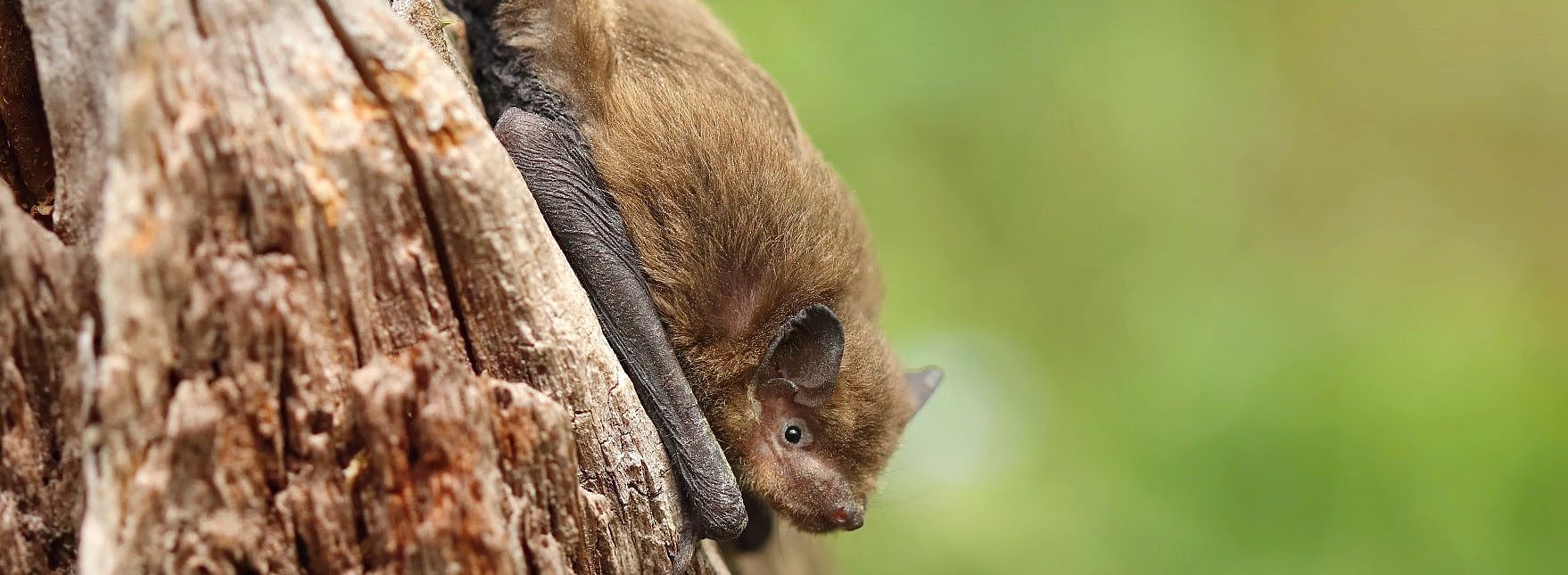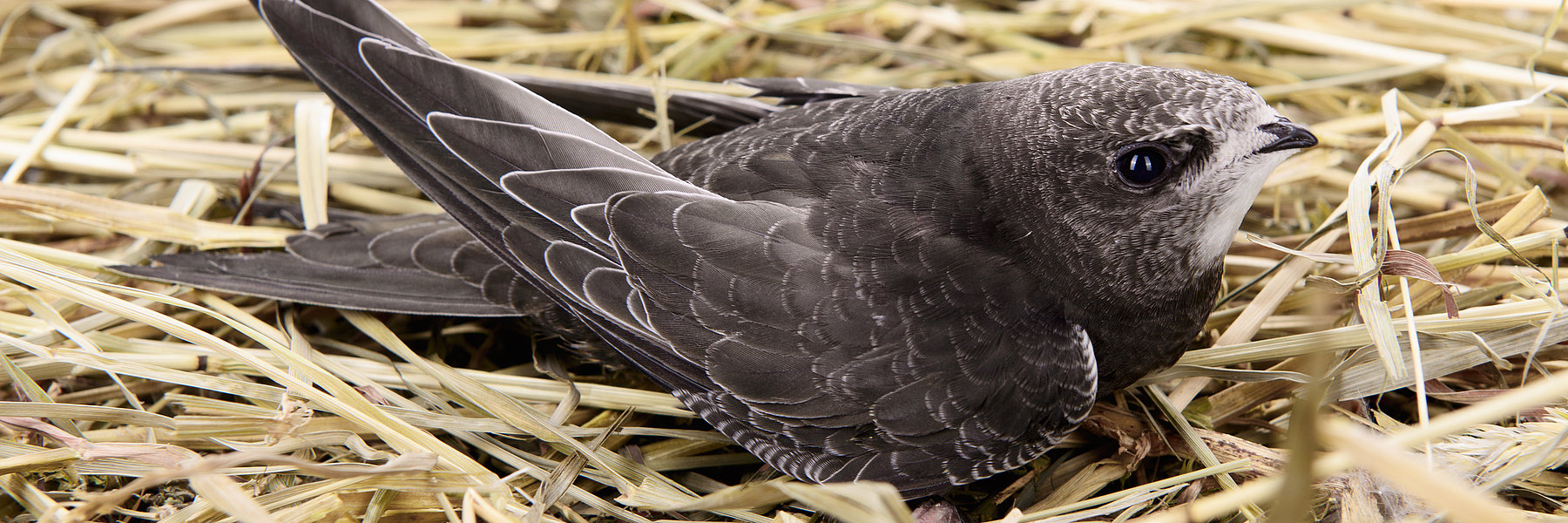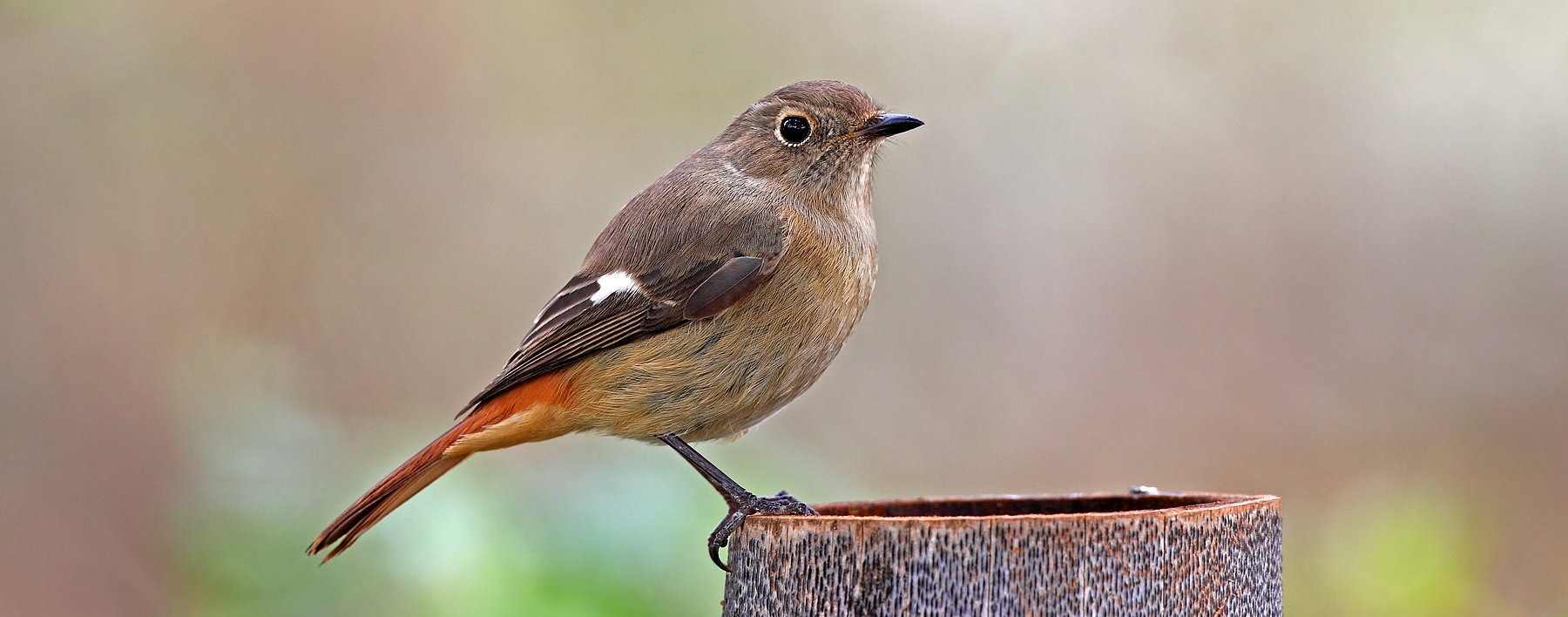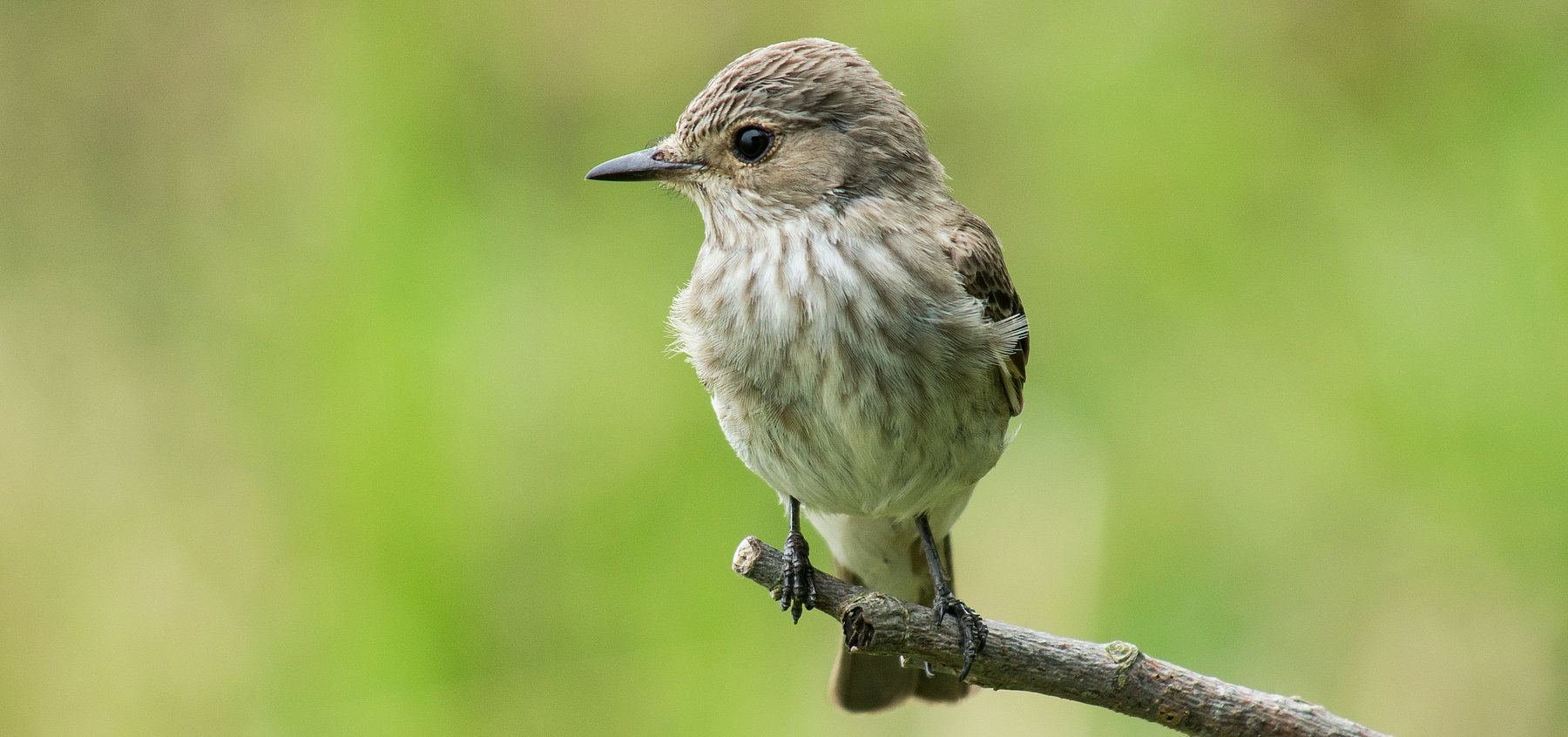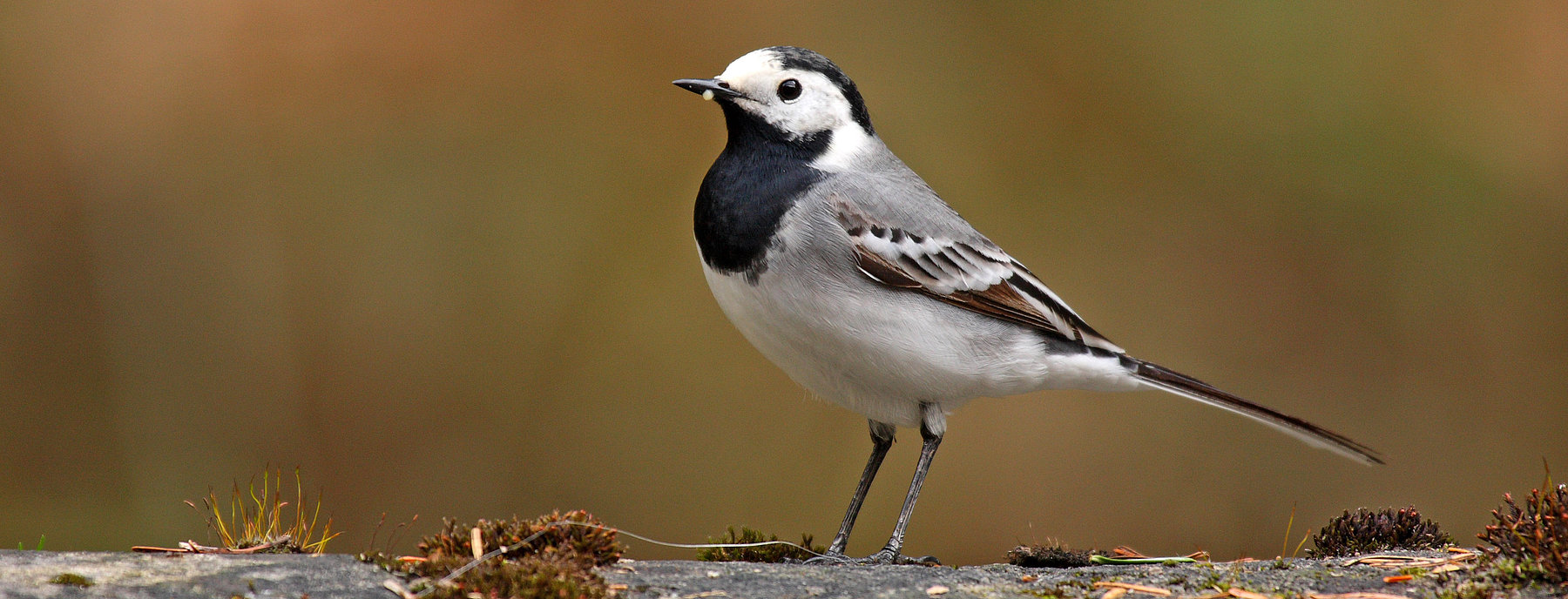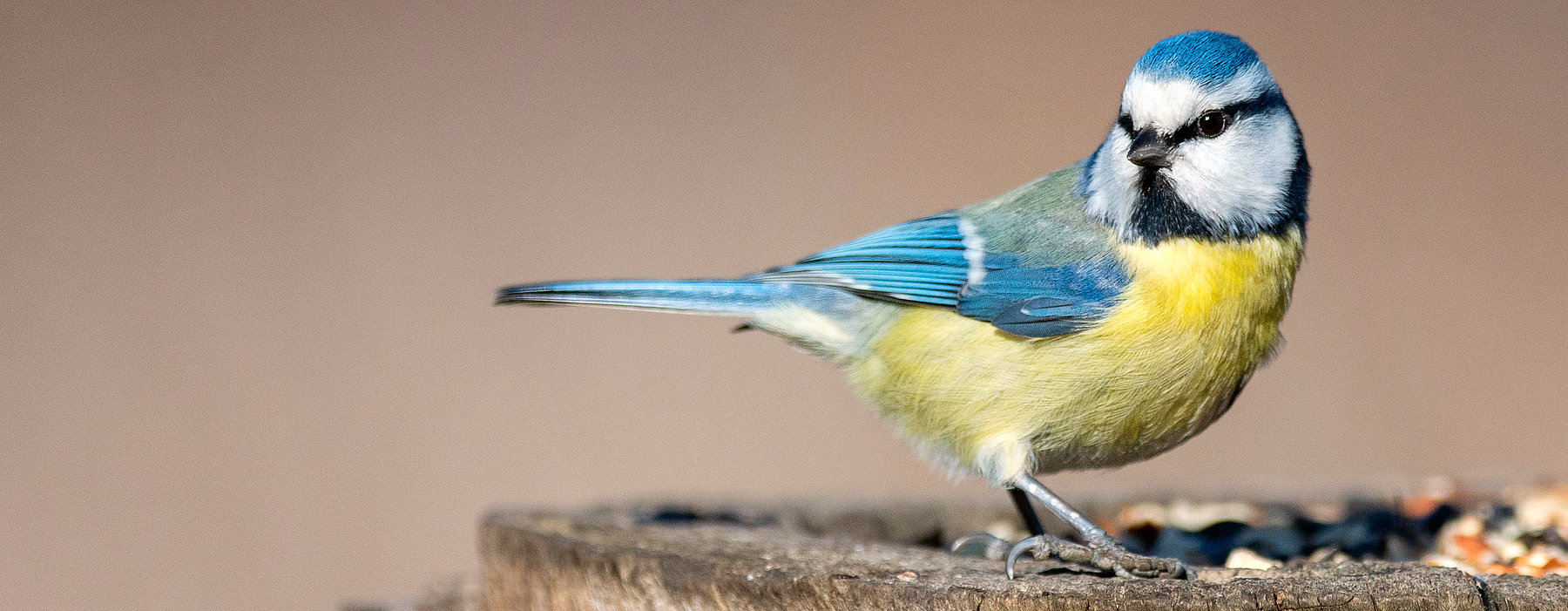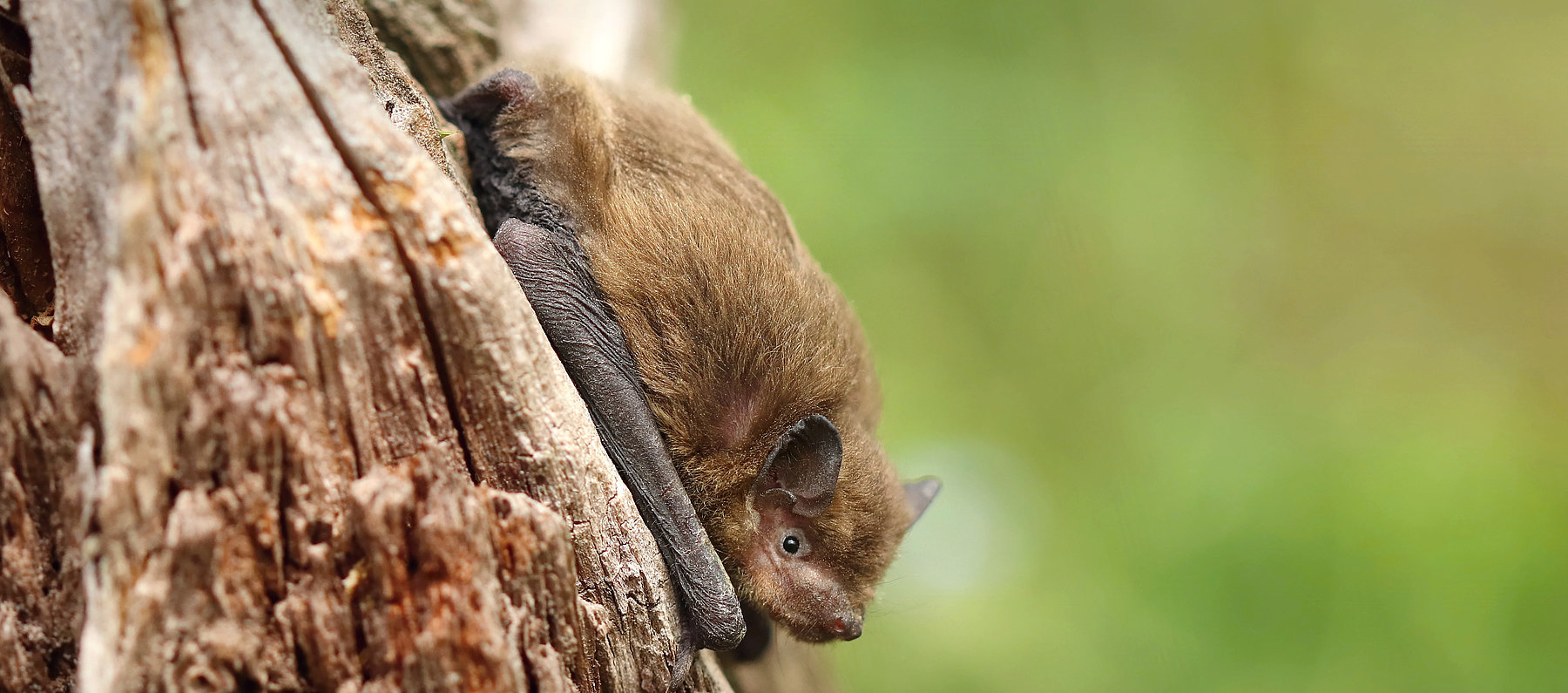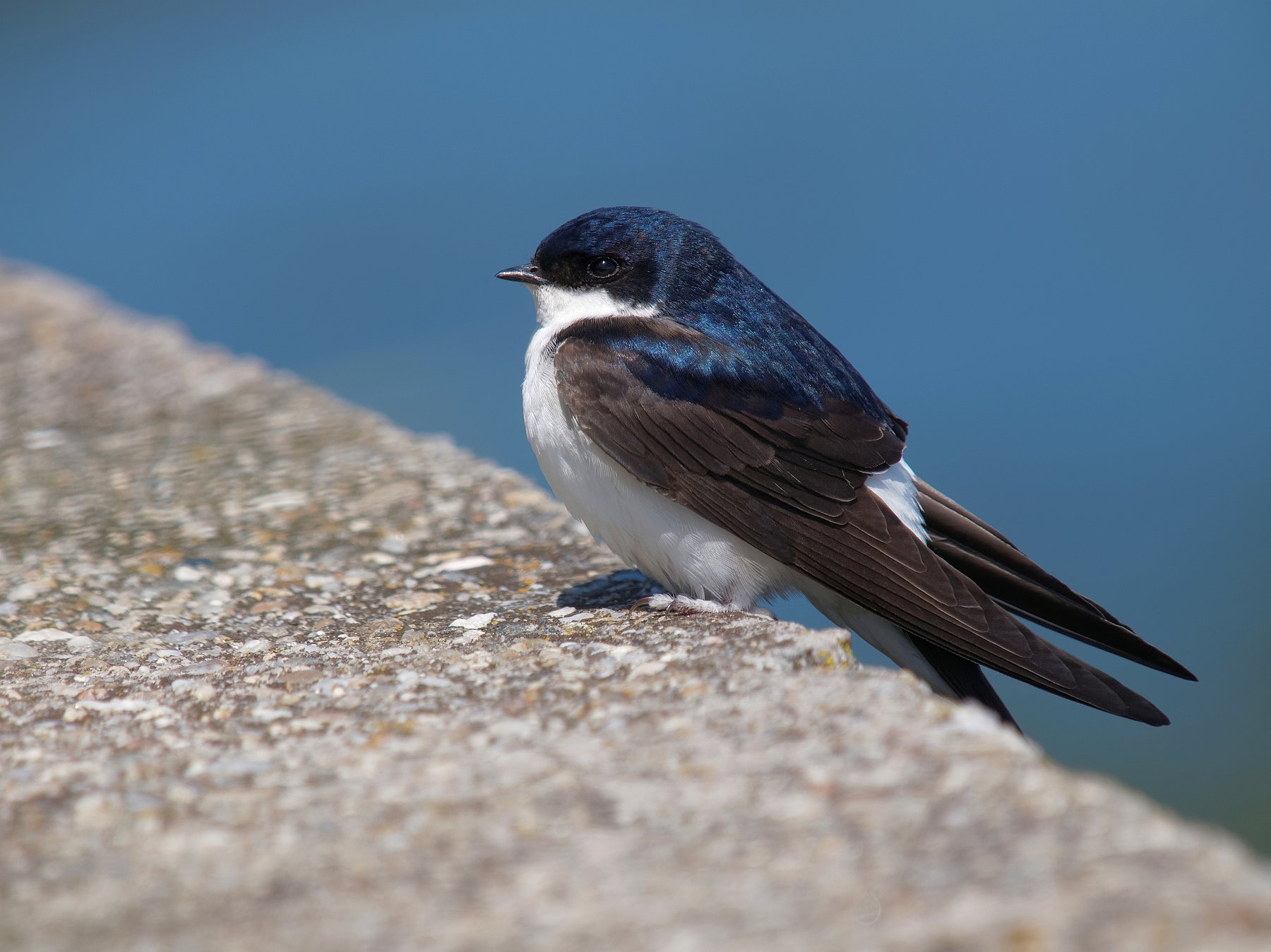Why species protection?
In recent decades, an accelerated decline in biodiversity has been observed all over the globe.
This problem is primarily caused by humans, yet its repercussions affect us more than it may seem. Species protection is essential – not only because animals and plants deserve to be protected for their own sake but also because humans depend on a world full of different species. Clear air, clean water and fertile soils are all fundamental foundations of our existence, and although they seem to be a matter of course, we are only able to take them for granted thanks to various processes in nature that involve a wide variety of species.
Each animal and plant species forms part of a larger ecosystem in which it has its own specific place and functions. A loss of these functions can have extensive consequences, as we are already beginning to see with an increase in insect deaths and the resulting decline in successful pollination. People are intrinsically connected to the natural environment that surrounds them.
We are able to shape this environment and are therefore also responsible for preserving it if we want to enable future generations to continue to enjoy a life well worth living.
We can all contribute to the preservation of our natural environment in a variety of ways, be it with huge measures or small changes.
Here at Hagemeister, we use our professional expertise to manufacture clinker nesting bricks that provide a safe haven for birds and bats. By doing so, we support the continued existence of our local fauna, including a number of endangered species. We also continually work to make clinker brick manufacturing, which is without a doubt an energy-intensive process, as efficient and resource-friendly as possible.
We place high value on consistency, stability and diversity – both in our clinker bricks and the constructions they are used to build and in the natural environment that forms the basis for a wonderful life in equal measure.
Common swift
Swifts are true expert flyers that very rarely touch the ground. Given their similar appearance, they are often mistaken for swallows but are actually somewhat larger and not related to them at all.
Between the end of May to August, swifts return to the climes of Central Europe to breed and bring up their chicks. They then fly back to southern Africa to spend the winter in a warmer environment. Swifts are a so-called “synanthropic” species, meaning that they thrive in areas developed by mankind. Although they originally bred in trees and on cliffs, they started to follow people and nest in human settlements a long time ago. Swifts are highly dependent on shelters in urban environments, for example niches and gaps in walls and roofs or, indeed, nest boxes, because they have adapted so much over time that they are now vary rarely seen in locations without a large human population.
Common swifts return to the same location each year to lay and incubate their eggs. Here in Germany, the population of swifts is considered to be very stable, but the number of swifts in local environments can decrease rapidly and severely, especially when nest sites are destroyed or disappear. What’s more, the decline in the number of insects means that it takes a lot more effort for swifts to find food for themselves and their young.
Given that swifts rarely leave their breeding locations compared to other species, you often need a bit of patience to be able to observe a swift flying into its nest. Such an observation is most likely to be possible in the evening in June and July, when dusk falls, the wind is no stronger than a breeze, and the temperature is above 15°C. You should plan to spend a good hour waiting and watching. Swifts are also active at other times of day but tend to feed their young less frequently during the day than in the evening.
When not at their nest sites, swifts mostly fly high in the sky and remain in groups, using skilful flight manoeuvres to hunt down insects. Their long call is highly distinctive, and you can listen to an example here.
Clinker nesting bricks for common swiftsSparrows
House sparrow
House sparrows have been living in human environments for a long, long time and can be observed in continental Europe all year round. As long as they can find enough food, above all seeds and grains, and suitable nesting sites in the form of niches and gaps in buildings or trees, they like to settle in a variety of habitats. Here in Germany, a decrease in the amount of food available, for example due to soil sealing, is currently causing the house sparrow population to decline.
House sparrows breed between March and August and usually breed two to three times a year. The parents return to the nest to feed their chicks very frequently and as a result, it is easy to tell when a nest box is occupied. Nesting material also often overflows from nesting boxes and bricks as a sure sign of active house sparrows.
Given that house sparrows are very social animals, they are mostly found in small groups. They generally return to the same location and tend to limit their flight radius to within approx. 100 metres of their nest during the breeding period in particular.
Tree sparrow
Tree sparrows have very similar lives and demands to house sparrows.
Their populations are currently declining so severely that they have now been classified as “Near Threatened” on the German Red List of endangered species, just like the house sparrow. Tree sparrows are slightly smaller than their house-dwelling namesakes, and when the two species are in competition, the house sparrow usually comes out on top. As their name would suggest, tree sparrows are often found in more rural areas but are also growing increasingly common in towns and cities, especially those without any house sparrows.
Tree sparrows have distinctive brown feathers on their head and a dark spot on their cheek, unlike (male) house sparrows, which are characterised by their grey crest.
Clinker nesting bricks for sparrowsWren
With a length of just ten centimetres, the wren is one of the smallest birds in Europe. That said, it has a remarkably loud call that can be heard from up to 500 metres away!
Although it is small, the wren is easily identified by its short, almost spiky tail feathers. Wrens live in a variety of habitats, with forests, woods, gardens, parks and field borders all meeting their demands for a good home. Thanks to this flexibility, wrens are not endangered.
They can usually be found all year round, and only wrens in colder regions tend to move south to warmer climes in the winter. Wrens feed on insects and spiders in the warmer months and add seeds to their diets to keep themselves full as it starts to get colder. They build nests out of mud and moss, mostly in bushes but sometimes also in suitable nest boxes. Wrens breed once or twice a year between around April and June.
Their chicks are fed by both the mother and father, who are active during the day and at dusk.
Clinker nesting bricks for wrensBlack redstart
Black redstart
The black redstart gets its name from the rust-red colour of its long tail feathers.
It discovered the advantages of human settlements as breeding locations a long, long time ago and moved from the caves and crevices of the highlands to settle in building niches and similar small gaps in house walls. Nesting boxes are important replacement habitats for black redstarts because their ancestral breeding locations are usually destroyed when buildings are renovated. Despite this negative development, the black redstart is currently not endangered in continental Europe.
Black redstarts feed on insects, spiders and berries and move to the warmer climes of North Africa and the Arabian Peninsula in the winter. Here in Germany, they can usually be observed between March and November. Black redstarts breed from the end of April to July and tend to breed two to three times a year.
They generally seem to be rather nervous birds as they are always fluttering around with quivering tails and frequently bending their legs.
Clinker nesting bricks for black redstartsMuscicapidae (Old World flycatchers)
Spotted flycatcher
The spotted flycatcher is quite rare here in Germany and has been classified as “Near Threatened” on the German Red List of endangered species. This means that it is not endangered, but a significant decline in its breeding population has been observed. Spotted flycatchers are particularly distinctive when it comes to hunting down their insect prey, swooping down from a perch before returning with their reward.
They like to live in sparse woods and forests but can also be found in human settlements that are not overly built-up. Although they prefer to breed in trees, spotted flycatchers are also happy to build their nests in nesting boxes with large openings. Spotted flycatchers are long-migrating birds that fly extremely long distances to destinations as far away as southern Africa every year.
They start to breed at the end of May and sometimes even continue until late August, depending on whether they breed once or twice in a year. Although spotted flycatchers are quite unremarkable in terms of their appearance and often occur isolated rather than in a group, they are not shy around humans.
Pied flycatcher
The pied flycatcher is classified as “Threatened” on the German Red List of endangered species and is considered to be a rare bird. When it comes to its hunting behaviour and migration pattern, it has a great deal in common with the spotted flycatcher but tends to move south earlier in the year.
Here in Germany, pied flycatchers can be found in woods, forests, parks and gardens. They usually breed once a year, at some time between mid-May and the end of June.
Clinker nesting bricks for MuscicapidaeWhite wagtail
The white wagtail is a frequently spotted bird that can be found in a wide variety of habitats,
especially close to pastures, streams and ponds. When on the ground, the slim black, grey and white bird can be easily identified by its frantically wagging tail.
White wagtails like to build their nests in locations such as holes in walls or on roof beams at a height of around ten metres. Their migration pattern varies depending on their location. White wagtails with nests in Germany tend to migrate to southwest Europe and northern Africa in the autumn months.
They breed once or twice a year, usually between the end of April and the end of June. White wagtails are active both during the day and at night.
Clinker nesting bricks for white wagtailsTits (blue, great, crested, marsh and coal tits)
Great tit
The great tit is a very common bird here in Germany and also the largest European tit species.
It usually remains in its wood, forest, park or garden habitat all year round and adapts its diet to suit the season, eating mainly insects in the summer before switching to plant-based nutrition in the form of seeds in the winter months.
When it comes to choosing a nesting site, great tits are anything but picky: although they traditionally breed in hollow tree trunks, they are also happy to settle in a wide variety of other refuges, with some even adopting letterboxes as their new homes. Great tits tend to breed between around April and June. Depending on the weather, they breed once or twice a year. They frequently fly to their nests to feed their young, and as a result, it usually doesn’t take long to determine whether great tits have moved into a nest box.
In the winter, it is also very easy to watch great tits on bird feeders given that they are not scared of people.
Blue tit
Blue tits are very similar to great tits in terms of how they live. They are, however, smaller and have a more delicate build, and the feathers on their head are blue instead of black.
Blue tits usually breed once a year between April and June. Given that they frequently fly to their nest to feed their young, you won’t have to wait long to check whether your nest box is occupied. Like great tits, blue tits like to make use of bird feeders in the winter months.
Marsh tit
Contrary to its name, the marsh tit does not live in marshland but can instead be found in moist deciduous forests or parks with an abundance of undergrowth. Like great tits and blue tits, marsh tits like to eat both insects and seeds and can be found here in Germany all year round.
Although they are less common than great tits and blue tits, they are not endangered. They prefer to breed in hollow tree trunks but are also happy to occupy nesting boxes.
Marsh tits breed once a year between April and May. The parents frequently fly to the nest to feed their chicks during the day.
Coal tit
Although the coal tit lives in coniferous forests, it does not favour fir trees but actually prefers spruces.
It is similar to the blue tit in terms of both size and nutrition. If coal tits are unable to find enough food here in Germany in the winter, they sometimes migrate to Southern Europe in the hope of finding more to eat. The coal tit population is currently stable. To ensure that this remains the case, it is important for coal tits to find nesting sites located close to the ground, for example in crevices or trees. They also occupy nesting boxes.
Coal tits usually breed once a year between April and June. Both parents are responsible for feeding the chicks.
Crested tit
When you see the feathers that form a distinctive crest on this bird’s head, it’s easy to tell where it gets its name. Crested tits are similar to coal tits when it comes to their size, habitat and nutrition.
They can be found here in Germany all year round but tend to be rather shy. Although they naturally breed in rotten trees, they occasionally use nesting boxes. The crested tit population is similar to that of the marsh tit and is currently stable.
Crested tits breed and bring up their chicks in April and May and usually breed just once a year.
Clinker nesting bricks for titsNuthatch
If you see a bird descending a tree trunk head-first, you have just encountered a nuthatch. The non-endangered bird, the population of which is actually increasing, can commonly be found in open woods and forests, large gardens, parks and cemeteries.
If they do not come across a nesting box to settle in, nuthatches breed in nesting holes in older deciduous trees. They can be found here in Germany all year round, but some leave their breeding locations in the winter.
Nuthatches breed once a year between April and June. They typically like to make the entrances to their nest holes smaller by plastering sharp edges or slits with mud and sand mortar.
Nuthatches can frequently be observed at bird feeders in the winter months.
Clinker nesting bricks for nuthatchesBats (common pipistrelles and serotine, grey long-eared and brown long-eared bats)
Germany is home to 25 different bat species, all of which are strictly protected. Given that they are active at dusk and during the night, these insect-eating mammals can often only be spotted by eagle-eyed watchers.
Bats retreat to different locations in the summer and winter. They tend to hibernate in damp and cool locations, some of which are underground, before moving to new homes, frequently those located under building roofs, in the summer. Bats often move between different refuges in the warmer months.
In the summer, female bats gather in larger groups and move into so-called maternity roosts, where they nurture their babies.
Serotine bat
With its wingspan of approx. 36 cm, the serotine bat is one of the largest bat species.
Its large wings and the fact that it is quite a slow bat species, flying at speeds of 20–30 km/h (12–19 mph), mean that its silhouette is easy to spot at dusk.
Serotine bats can frequently be found in and around human settlements and like to hunt for their prey around street lamps and in parks and gardens. Their summer maternity roosts are often located in roof ridges, while in the winter, they mostly like to hibernate underground in cellars, tunnels or caves or above ground in cracks and crevices in buildings.
Brown and grey long-eared bats
As its name suggests, the most distinctive feature of the brown long-eared bat is its large ears. With an average wingspan of 26 cm, the brown long-eared bat is slightly smaller than the serotine bat.
Its females form maternity roosts in locations such as roof frameworks before moving to cellars, bunkers and caves in the winter. The grey long-eared bat is very similar to its brown counterpart but has grey fur and a longer snout.
It likes to roost in cracks and crevices in buildings during the summer. Both species hunt down their prey in forests, woods, parks and gardens but can also be found in human settlements.
Common pipistrelle
With a size smaller than that of a matchbox, the common pipistrelle is one of the two smallest species of bat in Europe. It seems somewhat larger in flight thanks to its wingspan of a good 20 cm.
In the summer, the common pipistrelle mostly likes to roost in small cracks and gaps in buildings and in the winter, it hibernates in dry underground cavities or in cracks and crevices above ground. Common pipistrelles tend to hunt for their prey in built-up areas but also look for food around bodies of water, in parks and gardens and along the edge of woods and forests.
Observation
Bats can only be observed after sunset, when they leave their roosts to hunt down their prey.
The silhouettes of some species (for example serotine bats and common pipistrelles) stand out well against the background of the dusky evening sky, while other species only leave their shelter when it is completely dark outside. The light from street lamps attracts insects and is therefore also appealing to bats, so it’s well worth taking a closer look if you want to spot some bats looking for their dinner.
Bats can best be located with so-called bat detectors, which allow humans to hear the hunting calls of bats. Such devices are, however, extremely expensive. Bats can only be reliably located by professionals.
If you have a bat box mounted on or integrated into your wall, you can observe it in the evening to catch its residents as they fly out for their night-time activity.
Clinker nesting bricks for batsHouse martin
In the summer months, house martins take to the skies in more rural areas. They live in colonies and build mud nests below the eaves of buildings, with each nest comprised of up to 1,500 balls of mud.
House martins are endangered as a result of a decline in insect populations, destruction of nests, and modern forms of construction and can therefore benefit from nesting boxes that they can finish building themselves. Although house martins are easily mistaken for barn swallows, the latter do not have the house martins’ distinctive pure white underparts but instead have a brown throat and a black breast band.
Both species hunt for insects in similar environments, but barn swallows prefer to nest inside buildings, for example in stalls or barns. In September, house martins migrate to Africa to spend the winter in warmer climes.
House martins breed once or twice a year between April and August. Like swifts, they gather food for their chicks in their throat pouch instead of bringing each individual insect to the nest one by one – a method used by birds such as tits.
You can identify whether a house martin has settled in a nesting box at a very early stage because it will finish off the construction itself.
In some cases, however, other species such as sparrows or tits may use the nest instead, so it’s a good idea to keep a close eye on the box to see which birds are actually flying in and out.
Clinker nesting bricks for house martins